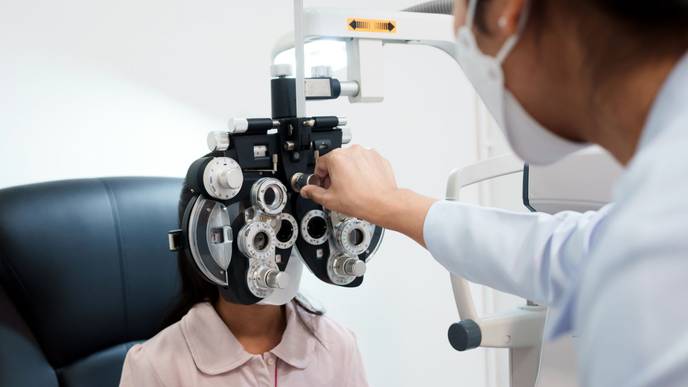ReachMD
Be part of the knowledge.™Pediatrics in Brevard: Having Children's Eyes Checked Yearly is Important for Overall Health

Eyes are vital organs that allow us to see and experience the world around us, so it is important that we take steps to keep our children’s eyes healthy.
August is Children’s Eye Health and Safety Month.
It is important for children of all ages to undergo preventative vision screenings and eye health exams regularly and to practice good habits to protect their young eyes from possible injury and trauma.
Becoming familiar with a few standard eye exams, being able to spot possible eye and visions issues and practicing common safety habits can help ensure your child’s eyes are healthy for years to come!
Previous Pediatrics in Brevard columns:
Lather up:It's important to properly apply sunscreen to kids during summer
Ladies, get these tests:Women should begin these three health screenings at an early age
Autism awareness:Do you have Autism concerns with your child? Here's what to know
Vision screening
Eye exams start immediately after a child is born.
Before infants are discharged from the newborn nursery, a health care provider will perform an exam to assess if there are any impediments or abnormalities present in the eye.
To do this, a provider will look for a red reflex in the eye by shining a light into the eye in a darkened room in order to detect a red color at the area of the pupil.
The “red” color observed is nothing more than a reflection off the retina (back of the eye) and should be present in both eyes.
If the “red” reflection is absent, it could indicate something such as retinoblastoma (cancer of the eye) or a cataract.
In addition to the red reflex exam, a provider will also evaluate how an infant’s pupils react to light and make note of the visual appearance of the eyes for any issues.
At approximately eight weeks of age, an infant should start to track and fixate on objects.
You should notice your infant making eye contact with you and others in your household, as well as fixating and following items of interest, including people, toys or their bottle.
Your provider will also evaluate your infant for any eye misalignment, also called strabismus.
This is when one or both eyes may turn inward or outward.
Eye misalignment is a serious condition that can lead to chronic eye problems.
Intermittent eye misalignment, on the other hand, can be normal until four months of age, but should be addressed by an ophthalmologist for further evaluation should the condition be persistent or continue past four months age.
When a child is between 3 to 5 years old, their provider will start visual acuity testing using eye charts as the child will be old enough to cooperate with the exam.
A provider will perform a visual acuity test during all well-child check-ups thereafter.
If there are concerns regarding your child’s visual acuity during one of these exams, your provider may refer your child to see an eye doctor for further evaluation.
Some concerning behaviors to watch out for that could indicate a vision problem include squinting, tilting/turning of the head, and failing to make or maintain eye contact.
Additionally, some symptoms to look out for include excessive tear production and sensitivity to light.
If at any time you are concerned about your child’s vision, it is imperative to alert your child’s health care provider as soon as possible.
Vision safety
It is also important to take steps to protect children’s eyes from possible injury and trauma.
With children, the most common trauma to the eye is a corneal abrasion, which is when the cornea, the clear layer at the front of the eye, is scratched by an object.
This type of injury commonly occurs when a foreign body, like dirt or sand, gets in their eye, or when their eye is scratched by an object, such as a toy or fingernail.
You should make note of any complaints of eye pain, light sensitivity or excessive tearing.
It is important that your child be evaluated by a health care provider to diagnose a scratched cornea to receive timely and appropriate treatment.
Additionally, it is imperative that you make sure your home is childproofed. This includes making sure cleaning products and other chemicals are stored well out of the reach of children.
Chemicals splashing into their eyes can cause serious and permanent injury and must be treated as a serious medical emergency.
Plan ahead and have emergency numbers readily available, including poison control, in the event you or others in your household need to request emergency assistance.
Finally, along with sunscreen, children should wear a hat and sunglasses as much as possible to protect their eyes from sun damage.
Head and eyewear can also help protect eyes from blunt force traumas that commonly occur during many outdoor activities.
Prepare for your child’s eye exams and practice these tips to ensure your child’s eyes stay safe, healthy and ready for the new school year!
Dr. Haille Hardison is a Doctor of Osteopathic Medicine for Pediatrics in Brevard working in the Melbourne location. She is a Merritt Island native and attended Pediatrics in Brevard as a patient when she was a child.
Facebook Comments